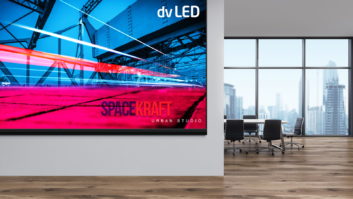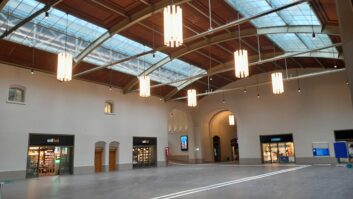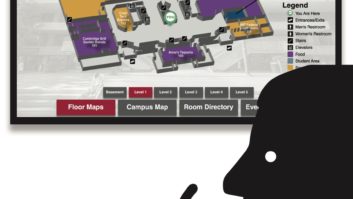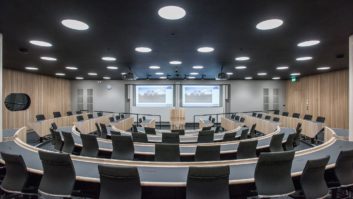
Finding new ways to create more open and transparent communications is becoming increasingly important with business and education leadership. Digital signage is already considered an easy solution for disseminating important and relevant branded information but typically confined to high traffic spaces such as lobbies, cafeterias and break rooms. Today, smart corporations and educational institutes are looking to leverage the digital displays found in their meeting room spaces to foster a culture of transparency and continue to create a unique experience for both employees, students and guests alike.
Meeting spaces have, like signage, undergone a transformation in recent years. High-capacity conference rooms with poor utilisation are giving way to more numerous but smaller huddle rooms designed for two to eight people. Huddle rooms are typically equipped with displays for local and remote collaboration and are often visible from the outside when not in use. These huddle room displays provide new opportunities to communicate to room users and passers-by alike when rooms are idle and maximise the return-on-investment for the room equipment.
One of the difficulties of digital signage in huddle rooms is the integration of separate signage players and room AV equipment. A typical huddle room will have a wired or wireless input switcher for users to connect their equipment to the display. As input switching is not typically handled inside displays but in external switching equipment, additional inputs ultimately add cost to huddle rooms that add up quickly when large numbers of rooms are present. Another concern is the lack of available space for additional equipment even when inputs are available, creating additional time to conceal the signage player in the space with other equipment. When functionally integrating the signage player, additional care must be taken to ensure the settings of the player’s outputs and display controls such as RS-232 work in conjunction with the room’s switcher, room control systems and administrative monitoring, again increasing design and deployment costs.
A key design decision in deploying digital signage is the type of signage player to be used. These are split into native signage players and more generic HTML5 players. Although virtually all digital signage has HTML5 display components similar to desktop web browsers, generic HTML5 signage players are more often embedded devices such as NUCs and embedded appliances. Whether generic or native, the signage player is almost invariably a single-purpose device whose administration will be separate from the room AV equipment.
In the professional AV space, a trend of integrating digital signage functionality into AV equipment is emerging, particularly within wireless collaboration equipment targeted for huddle rooms and other meeting room environments. Most equipment in the pro-AV industry that supports signage does so using generic HTML5. However, while generic HTML5 signage is not as capable as some dedicated signage players with native platform support, most signage platforms support generic HTML5. This in turn makes them useful for achieving the goal of broader digital signage reach. The advantages of a digital signage player integrated inside a properly-managed wireless presentation device or switcher can address all the integration concerns previously stated – input switching, space, control, functional integration and administrative monitoring. Per-room installation costs are naturally reduced, and room deployment becomes faster and easier. Rooms can be managed from a central location as devices that point to a digital signage URL that is managed in turn by the digital signage platform of the organisation’s choice.
Ultimately, the specific choice of wireless collaboration equipment with digital signage functionality will depend on the organisation, the AV integrator and the platforms to be supported. As the integration of digital signage becomes more ubiquitous in AV equipment, the support of platform-specific signage applications will become more prevalent and provide additional levels of control and monitoring of digital signage engagement with target audiences. Room analytics combined with digital signage will provide better targeting of signage at specific audiences. Integrated digital signage will provide additional revenue streams for signage platform providers more than signage player manufacturers, but the digital signage industry will derive additional growth opportunities from the extended reach of signage into corporate and education meeting spaces. The future of digital signage in meeting spaces is bright, and platform providers need to continue to engage with AV equipment manufacturers to capitalise on these new opportunities.
Michael Daskalopoulos is director, strategic platform technology, ScreenBeam






